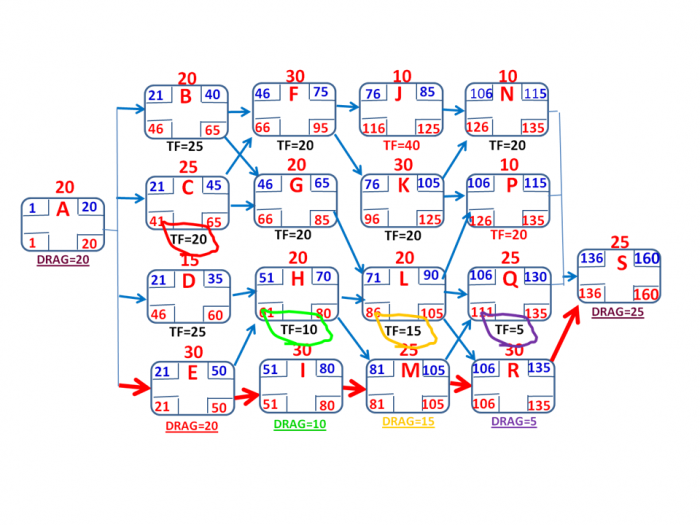So here are the answers to the quiz, along with an explanation of how to compute critical path drag in a simple (all FS) network:
- Which activity or activities has/have the most total float, and how much? J has TF = 40
- Which activity or activities has/have EXACTLY fifteen units of free float? Activities D & L have exactly 15 units of free float.
- How many units of time is each critical path activity ADDING to the total project duration of 160 units (i.e., what is the drag of each activity)?
Drag is ONLY on critical path activities, and in a network with ONLY FS relationships, it can easily be computed as follows:
- If an activity has NOTHING ELSE IN PARALLEL (i.e., no other activity is on a completely different path), an activity's drag is equal to its duration.
- If an activity has other things in parallel (i.e., other activities that are not on the same path as the critical path activity), the drag of the critical path activity will be whichever is LESS: its duration or the total float of the parallel activity that has the LEAST total float.
To show the answers to the exercise in diagram form:






